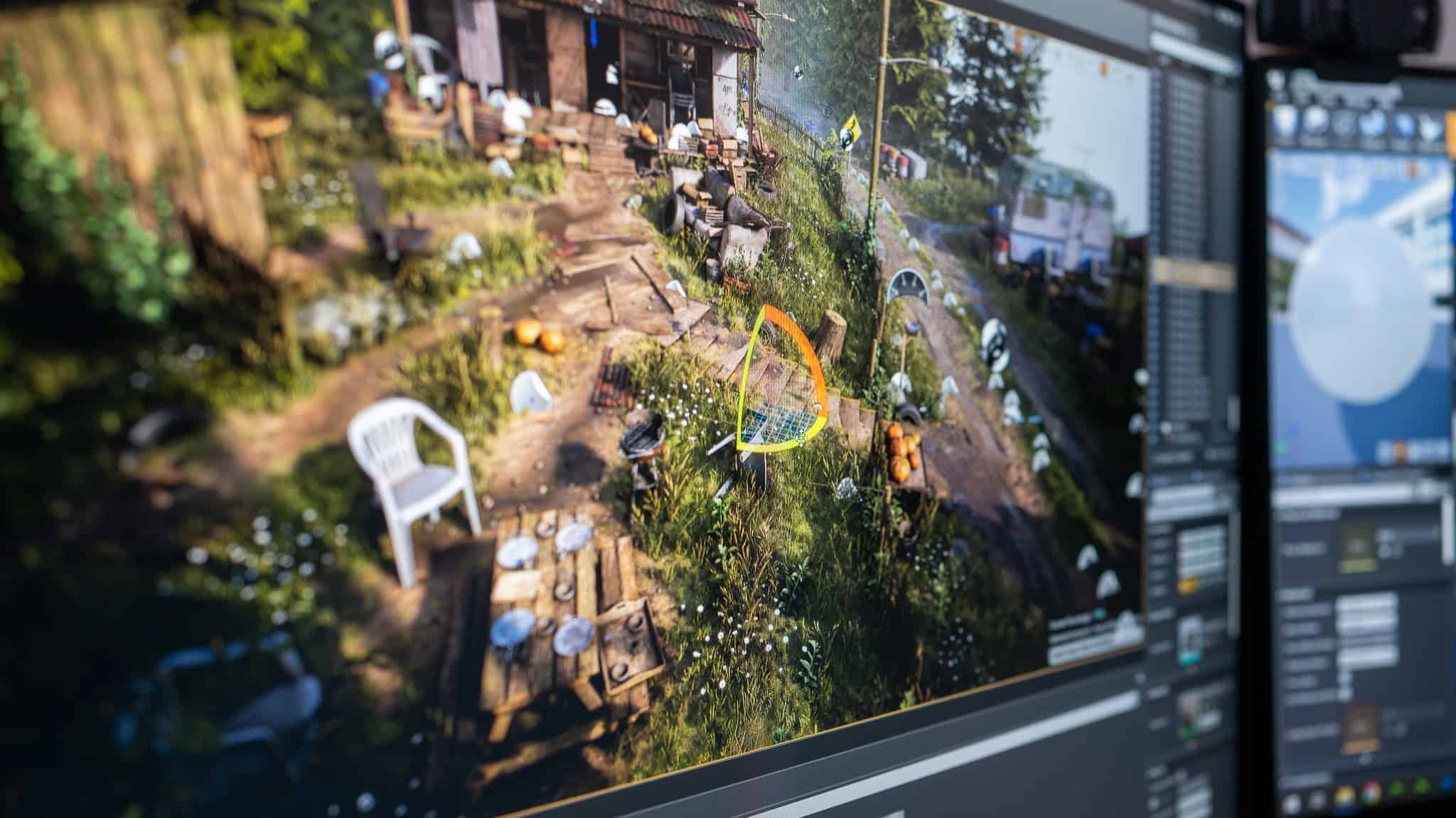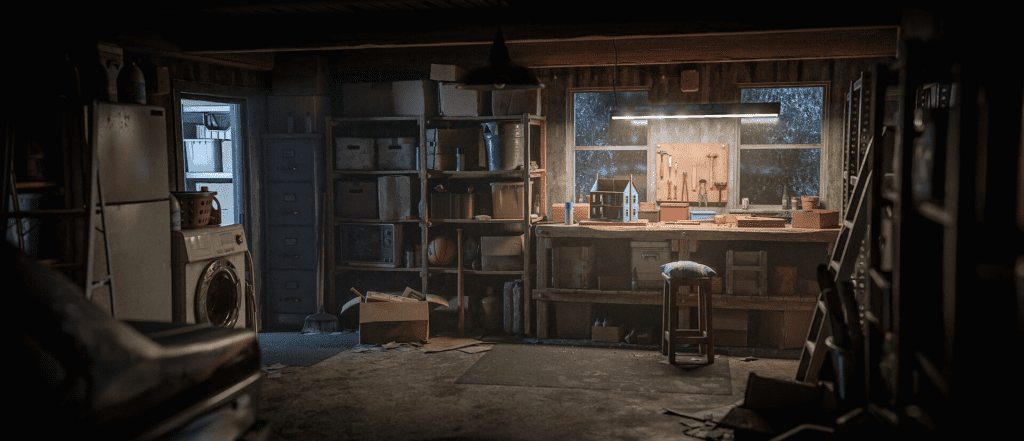
Maybe you are curious what an environment artist is or you are currently hard at work to become one. But what does an environment artist actually do in a production setting for a video game? This varies per studio and per production of course. Things like the scope of the project have a big influence on the day to day tasks and people you will work with. In this article I hope to explain in broad strokes what and environment artist does in a game production.
Making the world
The main task for an environment artist is to make the game world. This includes anything from designing the space and making blockouts to making the final structural elements and props. Basically what takes up most pixels on the screen.

However, this is not always the case and depends on the scope of the project and the studio you work at. Typically in smaller productions like indie games an environment artists is expected to own a bigger part of the pipeline. Where in a bigger production like an AAA game the environment artist focusses more on a smaller part of the pipeline but is highly specialised in that part, e.g. set-dressing.
On an indie game production you often have to come up with the design, blockout, and final version of a prop or structural element. On an AAA production you typically already have a design from concept art, the blockout is mostly done by level designers, all you need to do is make the final prop or turn the blockout in a simple art blockout and make a brief for outsourcing so the outsource studio can make the final prop.
In both cases set-dressing is a large part of the job. This means placing all kind of props into the environment to make the world believable and in accordance with art-direction.
Team work
As an environment artist you are responsible for what will end up in the environment. This naturally puts you at the center of many departments.

For instance, level designers made a blockout and now it needs to be turned into a “shippable” level. It is your task as an environment artist to make this happen. To make this happen you need to talk with your level designers, art-direction, concept art, prop art and if there are any cinematic or sequences planned in that area you need to talk to animation too. In addition you need to talk to tech-art to see what the limitations are for this environment and how you will work together to make it run on the lowest performing target hardware.
This is mostly from a AAA perspective. In an indie production it is often the case that you won’t get a concept art and you will be your own prop artist or level designer. Much more of the pipeline is on you as an environment artist.

Departments environment artists often work with are:
- Level Design – They make the level blockouts.
- Prop Art – They make the props and other content like textures plus they coordinate the outsourcing of the props.
- Animation – In this case, they are responsible for environmental sequences or animations.
- Game Design – They come up with the design of the game, what kind of weapons, how far can the player jump etc.
- Concept Art – They come up with the ideas and designs of the environments.
- Art Direction – They work closely with concept art and other departments to make a cohesive game from an art perspective.
- Tech Art – They make sure that the game performs well on all target hardware. In addition they make tools and other cool things for environment artists and other departments.
- Marketing – They are responsible for marketing the game.
Storytelling
A big part of being an environment artist is being able to tell stories through set-dressing. In many games the environments play a big role in the story and game world. Being able to tell stories and show the player what has happened in that world is a key part of your job as an environment artist. The challenging part about this is that you can only show the player and not tell. Often you need to be bold in what you will show. A useful tip I learned is this one: When showing something that has happened in the world show the impact of that event in at least 2 or 3 different ways or locations.
In the example below the theater is severely damaged. This is shown in 3 ways:
- The ceiling is broken.
- There is rubble on the ground.
- There is overgrowth on the rubble.
In this simple example you can clearly see the timeline of events. You can see that the overgrowth came after the collapse of the ceiling. And you can see that the guitar was not there when the ceiling collapsed but was placed later by someone.

Here is another example. You can see here that a person is working on a doll-house. At the same time the cardboard box is in front of the shelving suggesting this person has been looking for something.

Useful skills
You probably already know that you should know how a 3D program works and how to use a game engine so I won’t be mentioning these kind of skills here. Instead, I want to put some attention on often overlooked skills:
- Communication, you will work together with many different departments, good communication is important.
- Compositional techniques.
- A creative mind to make environmental stories.
- Know a little bit of level design, understanding the goals of level design can make your life so much easier as an environment artist. (and that of your level designer)
- Being able to do research and use references in a effective way.
- Being able to listen to feedback and know how to act on it.
- Having a basic knowledge about the technical limitations of a video game. Because environment art is the biggest part of the screen, it is also important to know how it impacts performance.
- Being able to kill your darlings. I found that most improvement often came after I deleted all my progress. This is mainly true when you’re set-dressing.
Conclusion
Many people focus on 3D and artistic skills when they talk about explaining environment art. With this article I wanted to focus more on what is involved when it comes to environment art and what the role entails in a production setting. I hope this was useful! If you have any question or want to know more. I am active on Twitter: @maartenjhof
To reiterate:
- An environment artist is responsible for creating the game world.
- Set-dressing is an important part of being an environment artist.
- You are at the center of many departments because you are responsible for what will be placed in the world.
- In indie productions you often wear more than one hat and are responsible for a bigger part of the pipeline.
- Environmental storytelling is a key part of the job.
- Don’t overlooks other skills besides knowing 3D and game engines.
Also, I just launched a newsletter. You won’t be hearing from me every week because I just started out but I will promise to send valuable tips and tricks about environment art and 3D.
